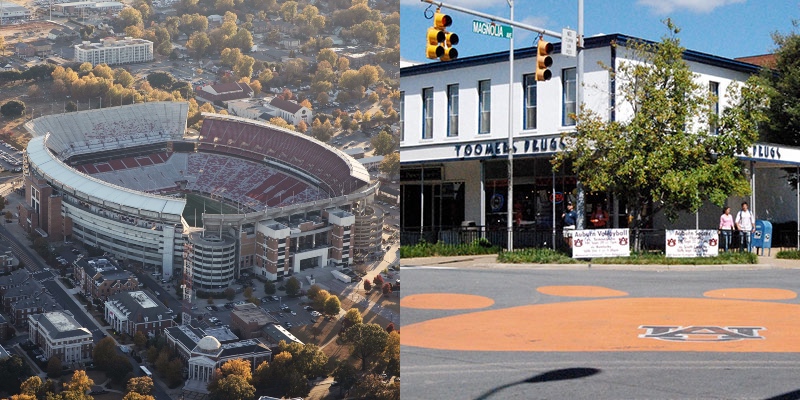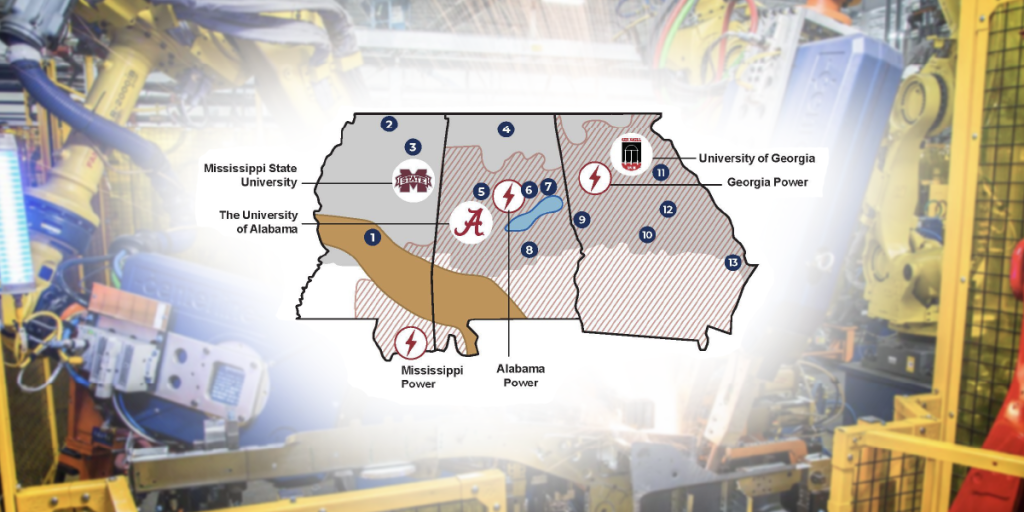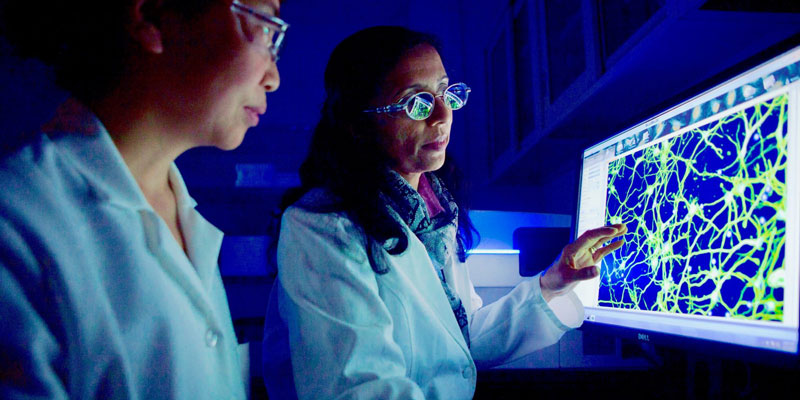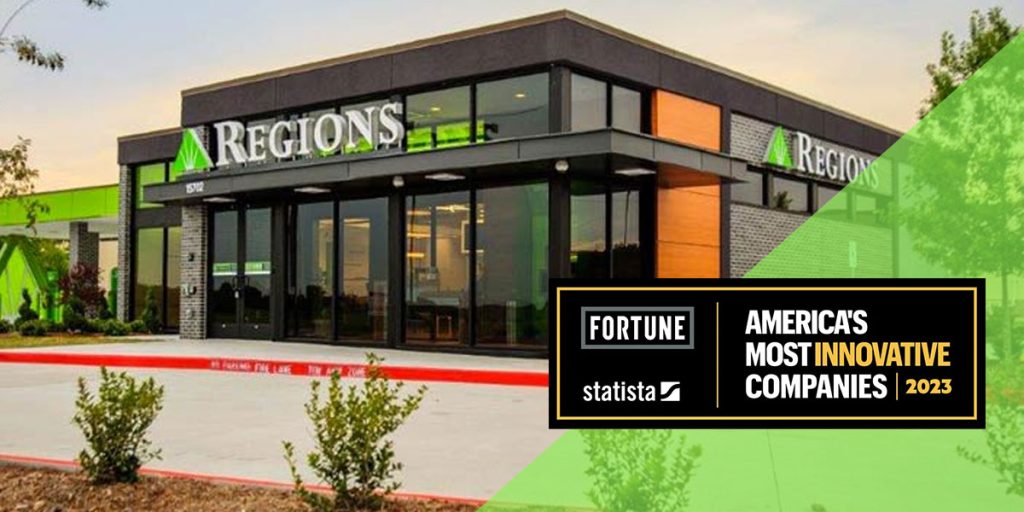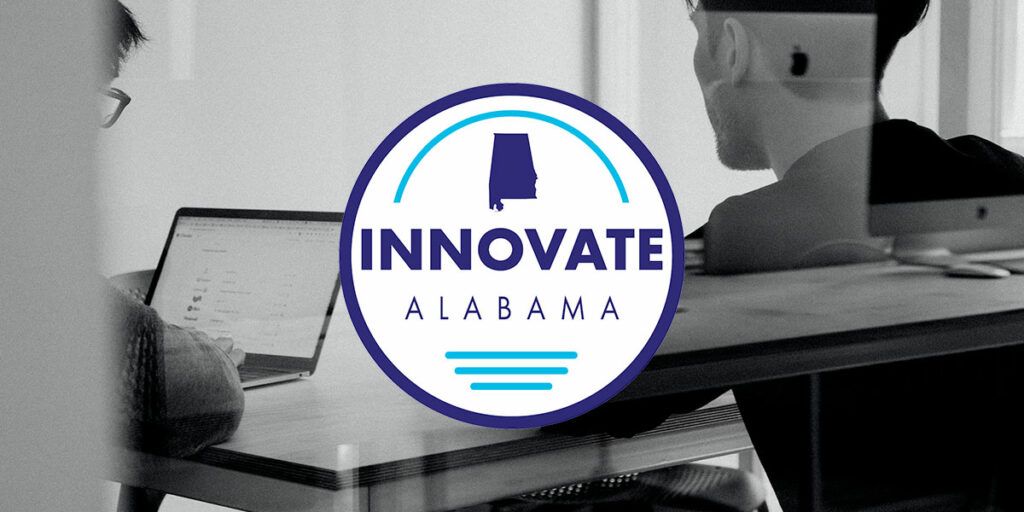Tuscaloosa and Auburn have a lot in common.
That assessment might give pause to passionate fans on both sides of what has been called college football’s greatest traditional rivalry. But if the subject is small-but-thriving communities that continue to expand their established industrial base while nurturing new businesses in emerging innovation sectors, the two cities – along with Tuscaloosa and Lee counties – offer a similar range of compelling advantages.
Start with the fact that both are home to major universities – the University of Alabama and Auburn University – with all of the attendant impacts on everything from K-12 education to arts and culture to economic development. Add low costs of living and doing business, numerous locational benefits and ample opportunities for outdoor recreation year-round, and the term “quality of life” becomes apparent in all its facets.
“If you dig deep into quality of life, you’re looking at actual facts,” said Arndt Siepmann, deputy director of economic development for the city of Auburn. “You’re looking at schools, housing, public safety and the ways those things contribute not just to profitability, but to the ability to attract and retain great people. A healthy community and a healthy business climate go hand in hand.”
The same is true in Tuscaloosa, where Danielle Winningham is executive director of the Tuscaloosa County Industrial Development Authority (TCIDA). What Winningham describes as “a small-town feel with the amenities of a bigger city” is reflected in housing options, the availability of parks and the variety of retail options, in addition to a growing population and a dependable, qualified and skilled available workforce.
“It’s that combination of factors that makes this area so vibrant,” Winningham said.
Both communities are situated in the heart of the Southeast, offering convenient access to larger markets. Located near Alabama’s western border, Tuscaloosa is served by Interstate Highway 20/59, one of the nation’s busiest commercial corridors. It is 50 miles from Birmingham, Alabama’s largest city and home to Birmingham-Shuttlesworth International Airport. Across the state, near its eastern border, Auburn is connected by Interstate Highway 85 to Atlanta and its international airport, just over 100 miles away.
Meeting the coming demand
Looking to the future, Tuscaloosa and Auburn have strategically developed assets and partnerships that position them for long-term growth in areas related to technology, innovation and entrepreneurship. The universities are playing increasingly active roles in nurturing, supporting and accelerating a variety of sectors with high-growth potential – including software development, defense and cybersecurity, IT, and medical and other advanced manufacturing – as well as finding new ways to build on long-standing strengths in the automotive sector.
What’s more, both communities are recognized as developing labor markets for computer programmers. Currently, Auburn ranks No. 1 and Tuscaloosa No. 3 among all U.S. metro areas for computer programming cost factors, with that field projected to add well over 500,000 new jobs to the state economy by 2026. Alabama and Auburn have strong computer science programs at undergraduate and graduate levels and are highly attuned to meeting the coming demand.
“We’re putting a real emphasis on diversifying around knowledge-based industries,” said Winningham. “We recognize that both our existing industry base and those sectors that are just beginning to emerge have an important part to play in ensuring that our community continues to prosper in the future.”
One of the results of that strategy, Winningham points out, is The Edge, a 26,300-square-foot incubator and accelerator that provides office space, workstations, conference rooms and wet labs to knowledge-based startups and early-stage ventures. A partnership of the University of Alabama, the city of Tuscaloosa and the Chamber of Commerce of West Alabama, The Edge continues to see steady growth in the number of businesses and individuals it serves, from 28 businesses and 50 people in June 2019 to 39 businesses and 90 people a year later.
In addition, the University of Alabama’s technology incubator, Edge Labs, incubated five university spinoff companies in 2019: 525 Solutions, an R&D company developing liquid technologies for the medical, pharmaceutical and materials fields; ThruPore Technologies, which produces innovative specialty materials for industrial uses; JAQ Energy, a developer of new technologies for power electronic and energy systems; and ForeSense Technologies, which is commercializing technology – developed by University of Alabama researchers, working with U.S. Army scientists – that uses electrical signals to quickly detect hazardous airborne chemicals.
“These companies are great examples of our vision for the future,” said Winningham. “It’s about connecting creators, builders and visionaries with the resources they need to be successful.”
In Auburn, a twofold strategy is accelerating the build-out of what already is a robust innovation infrastructure. The 170-acre Auburn Research Park, a partnership of the city of Auburn and Auburn University managed by the Auburn Research and Technology Foundation, supports development of knowledge-based jobs in a setting adjacent to the university campus, with its fifth new facility – the 100,000-square-foot Research and Innovation Center – having opened this fall. The city and the university are working with local manufacturing companies to optimize collaboration around innovation.
“Manufacturing innovation is happening here,” Siepmann said. “We’re finding the answers to questions like, ‘Where are the best employees?’ and ‘What is the best training?’ Increased automation means increased demand for engineers and technicians from technology-based value-added manufacturing companies. Supporting that also helps drive innovation in other areas.”
Siepmann reels off three companies that exemplify Auburn’s growing success in leveraging and expanding its innovation infrastructure:
- GE Aviation recently completed a $50 million expansion of its aerospace additive manufacturing operation to incorporate 3D printing technologies; the project created 60 new jobs.
- RAPA, the U.S headquarters for German-based Rausch & Pausch. The company produces high-precision automotive parts, using Auburn-based R&D.
- Sio2, a homegrown company that has for many years manufactured glass vials for medical and scientific uses. In July, the company announced a $163 million expansion after receiving a contract to supply the federal government with glass-lined plastic vials to support efforts to develop a vaccine for COVID-19; the project will create 220 jobs.
Siepmann also mentioned Auburn’s additive manufacturing accelerator, funded through the Alabama Department of Economic and Community Affairs. Currently, the program is working with 10 existing companies and three startups.
“We are providing steppingstones for companies and founders to learn about the viability of technology in their operations,” said Siepmann. “Auburn is a great example of how economic developers can leverage the assets of a university and state government to accelerate innovation and business development.”
All of which adds up to one more thing that Auburn and Tuscaloosa have in common: A bright future.
(For more information about innovation and opportunities in Alabama, contact Amendi Stephens)
(Courtesy of Alabama NewsCenter)




